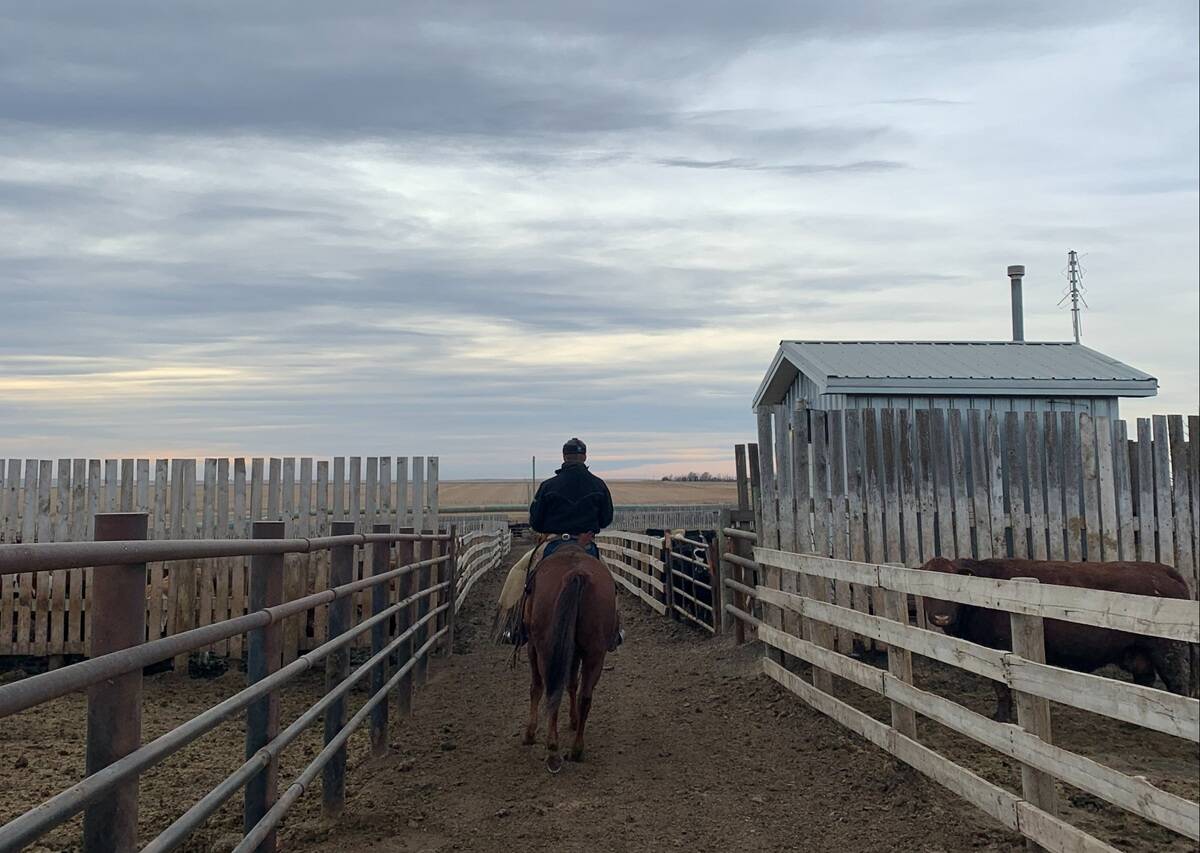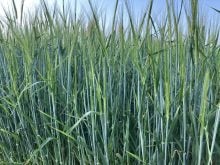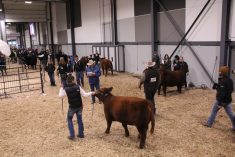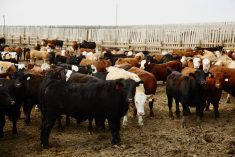Fed cattle
Due to the drought-forced placement pattern last year, the market-ready fed cattle supply in Canada is larger than normal for the start of a new year. This, coupled with uncertainty in the cattle market due to labour disruptions in many industry sectors, has led to a back-log of front-end supply and a soft start to the 2022 fed market. The average fed steer price in Alberta the first week of 2022 was $162.71/cwt, down $2.97/cwt from the end of December and $17.18/cwt from the start of last year. Basis is wide in early 2022. The first week of January saw the cash-to-cash basis at -$14.39/cwt, over $20/cwt weaker than the start of 2021.
Slaughter data in Canada through the end of 2021 reported a seven per cent bump in fed meat production. Contributing to this was a six per cent increase in fed steer slaughter, to a total of 1,838,063 head. Heifer kill through 2021 was nine per cent above 2020 at 952,909 head. Exports of fed cattle, including slaughter cows, were eight per cent below at 446,041 head. Export data was available up to the third week in December.
Read Also

Pen riders still better than tech at detecting respiratory disease in feedlot cattle, says researcher
Recent research found that pen riders are better than tech at flagging signs of BRD in feedlot cattle
Deb’s outlook for fed cattle: Packing plant outbreaks of Omicron and worker shortages slow manufacturing while mandatory isolation and work-from- home policies affect movement to food service. The suspension of beef imports by China — Canada’s third-largest export market — following the atypical BSE case found in Alberta could also affect the fed cattle market if it lasts longer than expected. The fed cattle market in the near term will struggle as we work through supplies and labour issues. Towards the end of the first quarter, fed cattle supplies will tighten just as the typical spring beef demand increases. Fed cattle prices are expected to see a seasonal rally into the second quarter.
Feeder cattle
Extreme winter weather and record feed costs have been troublesome for anyone feeding cattle. To combat climbing feed barley prices and tight supply, many feedyards committed to importing corn. However, logistics and the time frame to land corn in the yards remain an issue.
That said, feeder prices have improved. The average price of 550-lb. feeder steers at the start of January was $218.50/cwt, $12.05/cwt higher than one month prior and up $0.25/cwt from the start of 2021. However, volumes are light and prices have varied regionally, particularly on cattle type and quality.
Heavier classes of cattle, as well as feeder heifers, have not seen as much of an increase. However, both are higher than at the end of 2021. The 850-lb. feeder steers at the start of 2022 averaged $185.25/cwt, up $6.39/cwt from early December and steady with the end of 2021. Prices at the start of 2022 were $11.37/cwt higher than 2021.
Feeder basis is extremely wide compared to recent years. The 850-lb. basis was -$21.75/cwt for the first week of January, over $21.00/cwt wider than last year. The wide basis is encouraging exports. Through the fourth quarter, feeder exports were nearly 85 per cent higher than last year. The total number of feeder cattle exports to the third week of December 2021 was up 20 per cent, totalling 142,147 head.
Provincial movement has also increased. Eastern buyers have been able to step up as feed costs remain somewhat cheaper regionally.
Deb’s outlook for feeder cattle: Tight feed supply and high feed prices remain the biggest limiting factor in the feeder marketplace. Already high break- evens have buyers extremely cautious about purchases. However, there is considerable optimism about the cattle market in 2022. Lightweight cattle volumes will remain lower as many background-type calves were sold and placed on feed in the fall. As we move through the winter, prices should be well-supported locally as well as in the export market.
Non-fed cattle
The end of December and start of January saw extremely cold weather hit much of the Prairies, limiting hauling of additional cows to market. Last year saw cow prices rally to a high of $76.10/cwt just before Christmas. Light volumes, cold temperatures and competition for kill space from the fed cattle supply were the reasons behind declining prices and demand as the new year started. The start of 2022 saw D1,2 cow prices average $74.40/cwt, down $1.70/cwt from the end of December and $1.00/cwt under the start of 2021.
Cow slaughter in Canada in 2021 was 12 per cent larger than the previous year. This could also help explain why fewer cows were available in early 2022. The total cow slaughter for 2021, according to preliminary data, is 450,293 head.
More butcher bulls were also slaughtered in Canada in 2021 than the previous year. Butcher bull slaughter is up 29 per cent, totalling 17,482 head. Slaughter bulls started the year off with an average on light volume of $99.30/cwt, virtually unchanged from the previous weeks in December as well as the average that started 2021. Bull exports through 2021 were down 12 per cent, at just 9,596 head exported.
Deb’s outlook for non-fed cattle: Trim and grinding beef demand has been strong recently even as cut-out prices struggled. In general, over the past two years as COVID-19 affected the economy and disposable income, demand for lower-priced protein sources remained constant. More meals at home also encourage value-cut usage. This, along with a tighter supply of non-fed cattle through the start of the year, should support the market. Higher-priced and harder-to-find fall and winter feedstocks led to fewer cows held over to market in the new year. Local packers are busy working through a fed cattle backlog, which may limit interest in the non-fed market. However, Canadian cow prices will have a strong export floor. The D1,2 cow market may be slow-moving in the near term but fundamentals point to a seasonal price trend with higher prices as we move through the first quarter and into the spring.
















